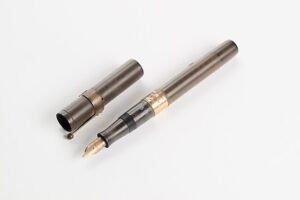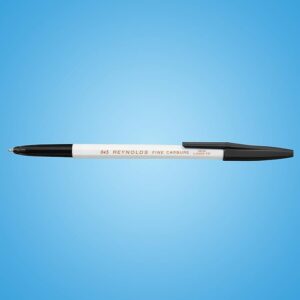The rubber stamp has a macabre history, if not directly then by association. As with all human developments occurring in fits and bursts through strange coincidences, the rubber stamp was invented due to the fortuitous timing of the invention of anesthesia and the development of cheaper false teeth in the mid 1800s.

It all started in 1839, when Charles Goodyear discovered that mixing Sulphur with India Rubber resulted in a tough, moldable material. He called it Vulcanite and patented his process of vulcanization in 1844. Goodyear was an idealistic inventor beyond all else, so over legal and health troubles, and after a rocky life he died in 1860, setting off but never quite seeing the extent of his discovery’s effects on the world.

Vulcanized Rubber was a miracle material. Strong and pliable, it allowed for things that traditional materials used at the time were simply not capable of. One such essential item were dentures.
Until this point, artificial teeth were made of a combination of wood, gold and ivory, and were hence a luxury for the very rich. It was also common practice to reuse real human teeth in the dentures, because they were the only thing strong enough for the job. They were obtained by paying the poor to give up their own, or through the ghoulish world of body snatchers and nefarious characters who obtained them by more grim means.
“Waterloo Teeth” was a common euphemism at the time, indicating a common source of many teeth in dentures. Scavengers had robbed the thousands dead on the field after the bloody battle of Waterloo in 1815, providing a supply of raw material for dentures for years to come.

Image Courtesy – Wikimedia Commons
Into this world, where a set of dentures cost 25 Guineas, a maids annual income, the new vulcanized rubber was a godsend. Rubber as a base for dentures was cheaper and more comfortable than gold or wood. It also clung to the mouth by suction when molded properly, meaning your dentures didn’t need springs! Combined with the fact that the invention of anesthesia meant painless tooth extraction and that the new dentures cost only 6 Guineas, artificial teeth on a vulcanized rubber base were going to be the new hot thing.

Image – Wikimedia Commons
From Vulcanized Dentures to Rubber Stamps
In 1851, Nelson Goodyear, brother of the inventor, patented a process of using Vulcanite to manufacture molded dentures. The Goodyear Dental Vulcanite Company was formed in 1864 to license this out to dentists, extracting a heavy fee for them to use the Vulcanite material in small heating vessels called Dental Pots.
James Orton Woodruff, whose uncle was a dentist, wondered if the same dental pots could be used to mold letter forms as used in printing. With his uncle’s help he tried it out in 1866 and the first art stamps were invented, eventually expanding to a thriving business for Woodruff and the range of rubber based stamps that resulted in the 20th century.

Image Courtesy – Wikimedia Commons
But rubber stamps were not in the sights of the Goodyear company at the time. By the 1870’s their zealous Financial Director, Josiah Bacon was going up and down the US filing lawsuits against dentists who failed to pay the heavy licensing fee for what was, after all, a major medical breakthrough.
This all ended in tragedy when a distressed dentist shot Josiah Bacon dead in his hotel room in 1879. Two years later the patents expired and the cost of dentures dropped drastically. Both dentures and rubber stamps were here to stay and would change the world in a million small and large ways.
That same year, after having headed the water works in the city of Indianapolis, after setting up a popular suburb there, and while preparing for a scientific expedition around the world, James Woodruff died suddenly at the age of 39.
From its source in the ancient Olmec culture, to its myriad modern uses, to all the cryptic stamps of underground clubs left on the hands of unaware party animals in the night, rubber has always left an impression. The native South Americans had a word for the natural rubber they valued so much. It was ‘Caoutchouc’, the weeping tree.
Read other interesting stories of stationery and its origin on the links below,
- Read about the Olmecs who discovered rubber – https://inkymemo.com/olmecs-rubber-people/
- We test the extra soft kneaded eraser from Faber-Castell – https://inkymemo.com/faber-castell-kneaded-eraser-test/



